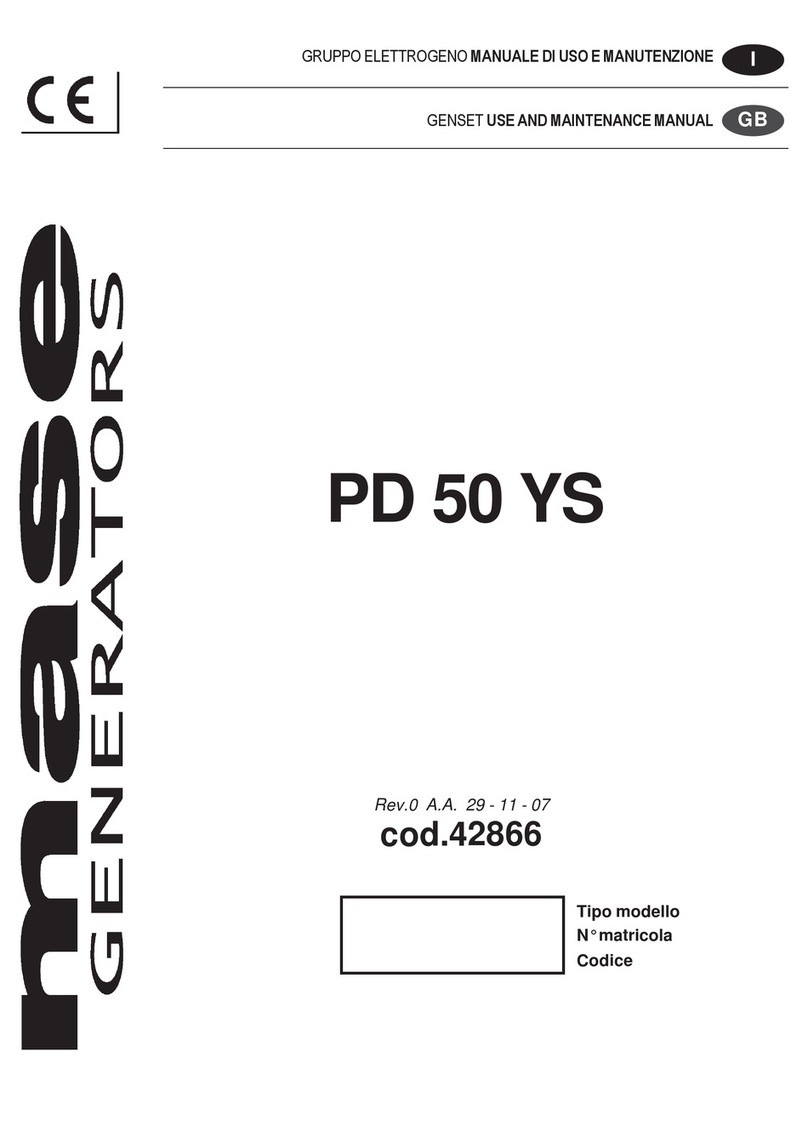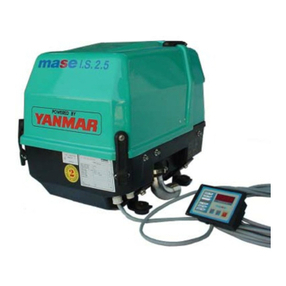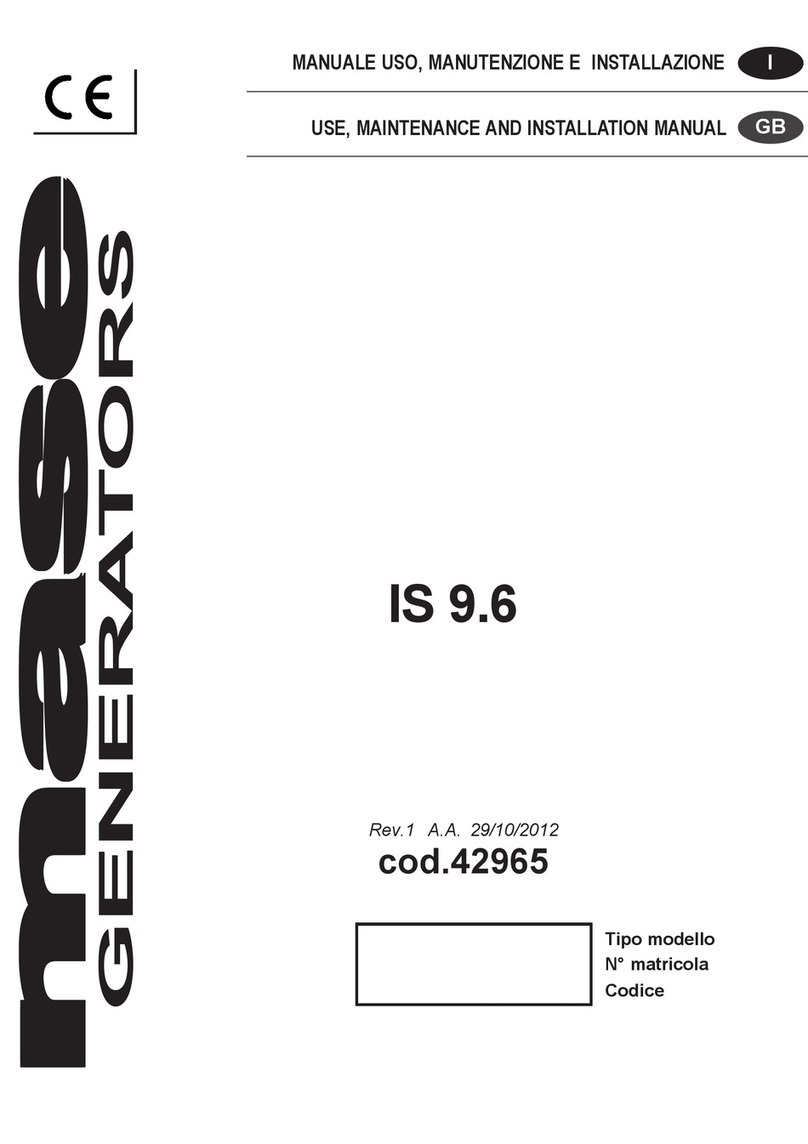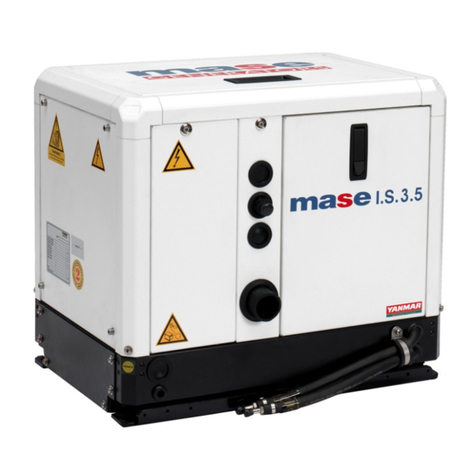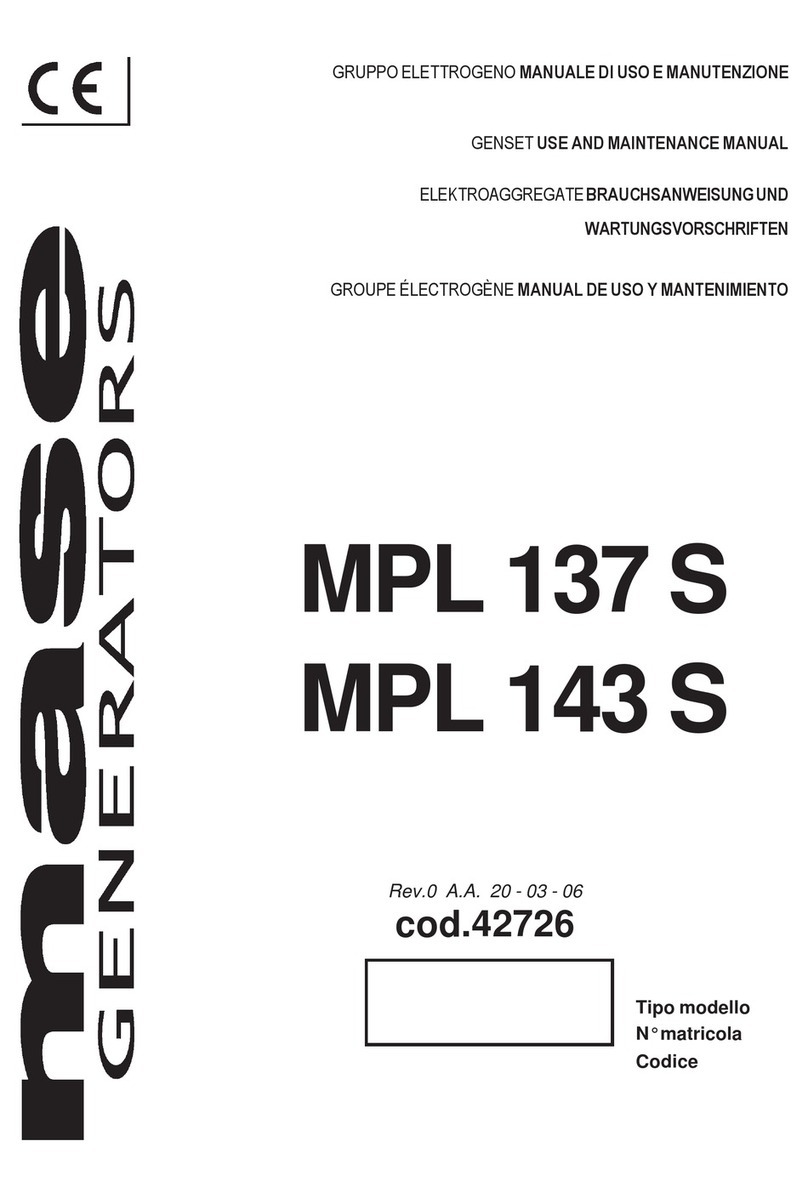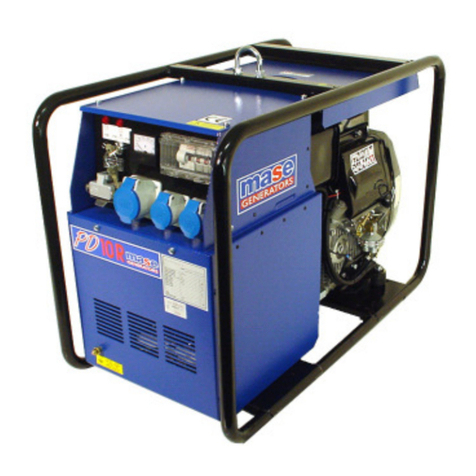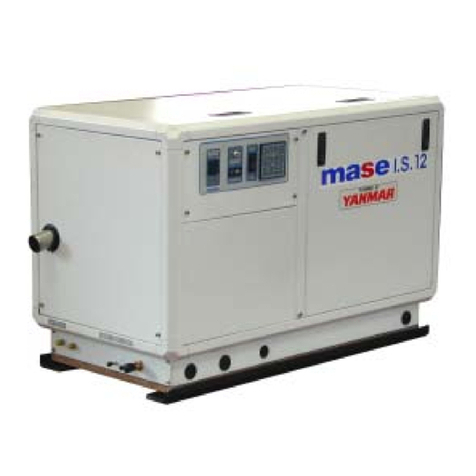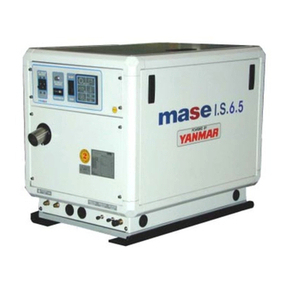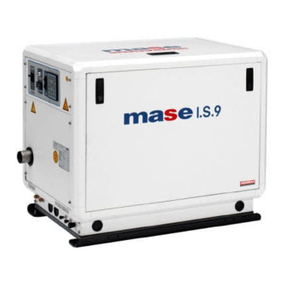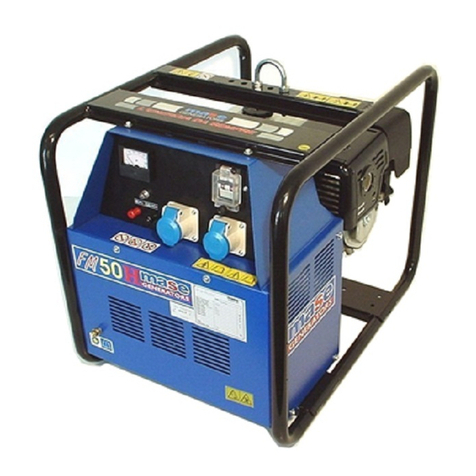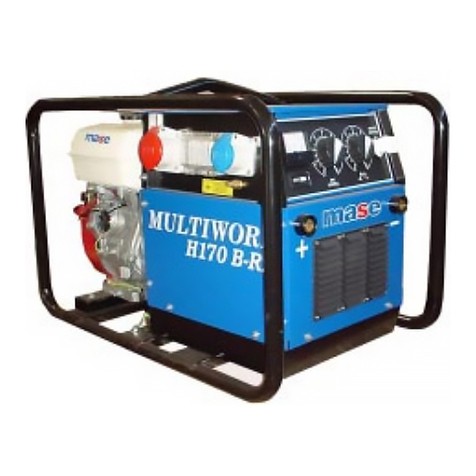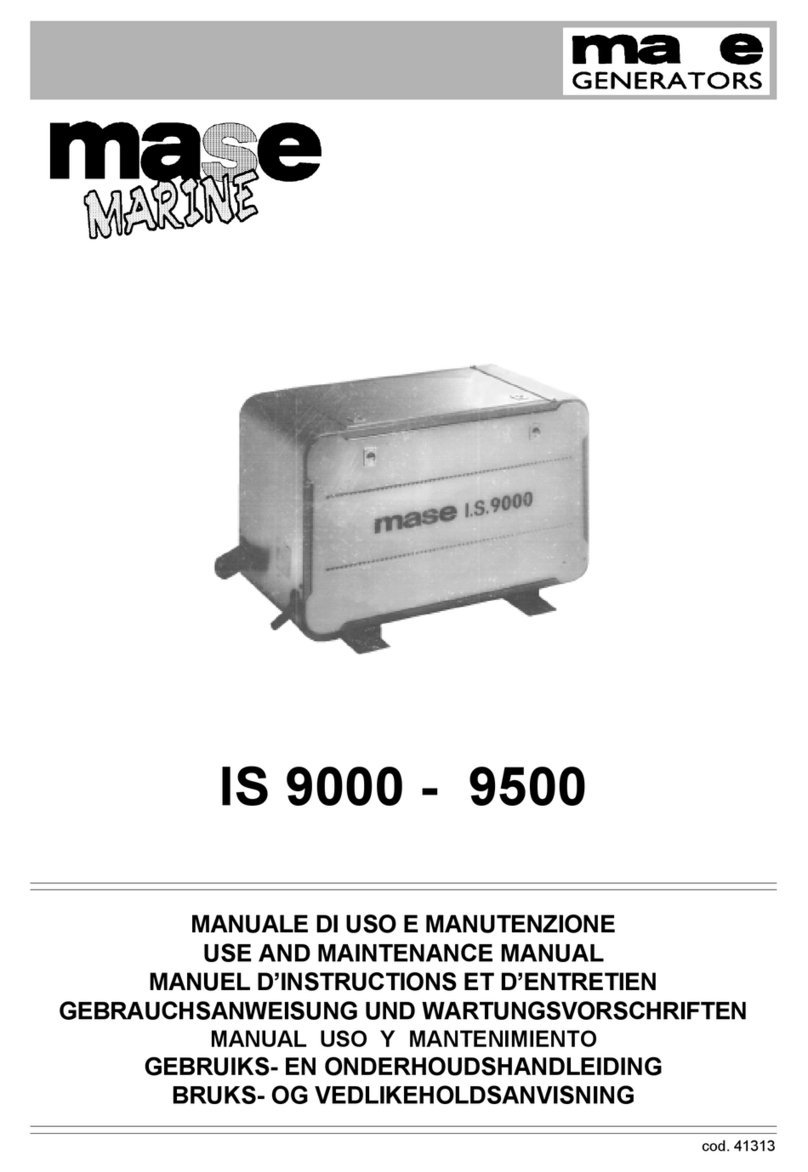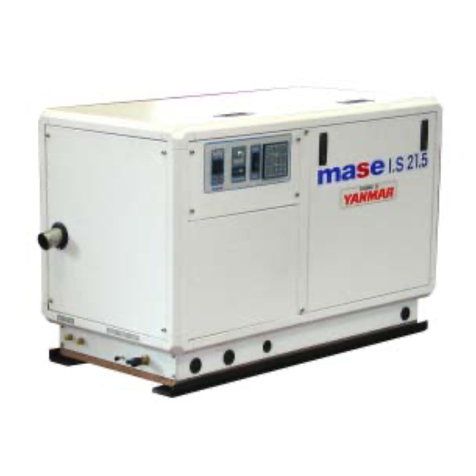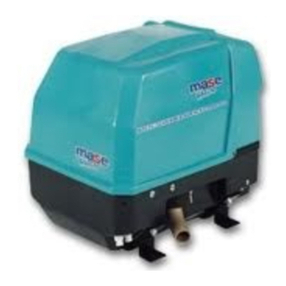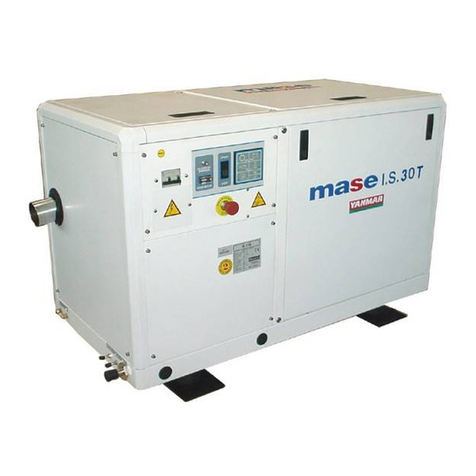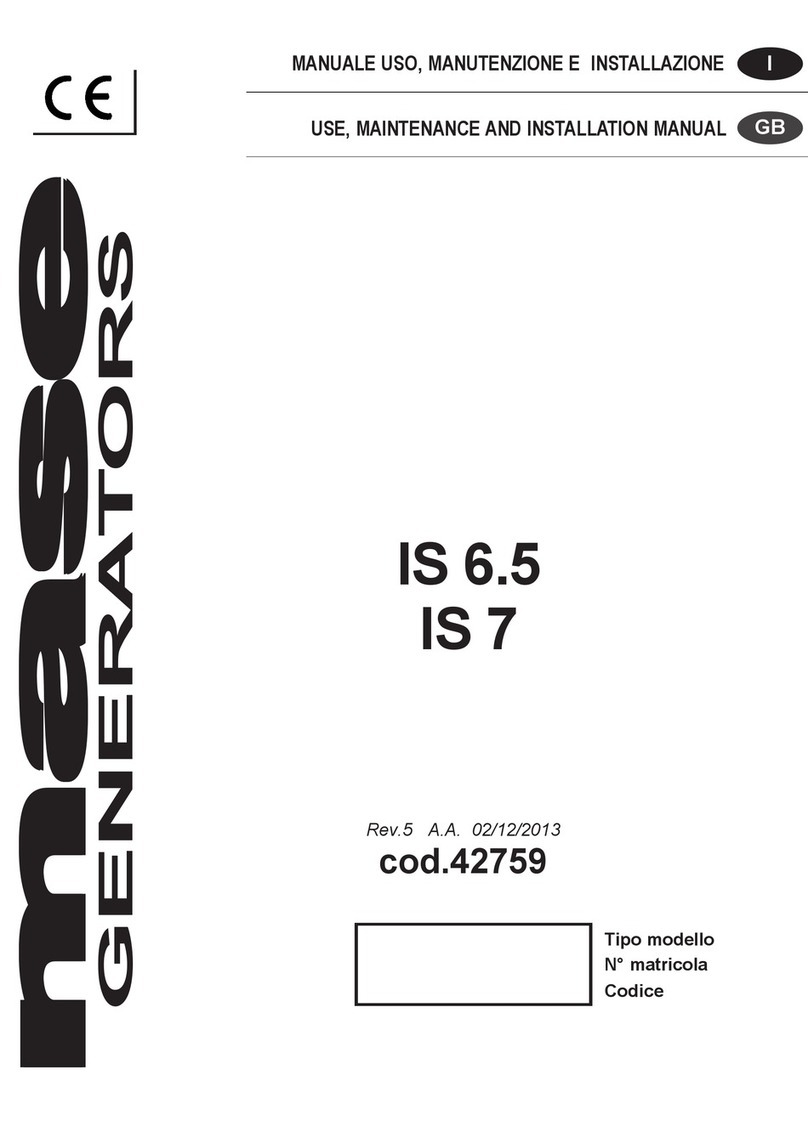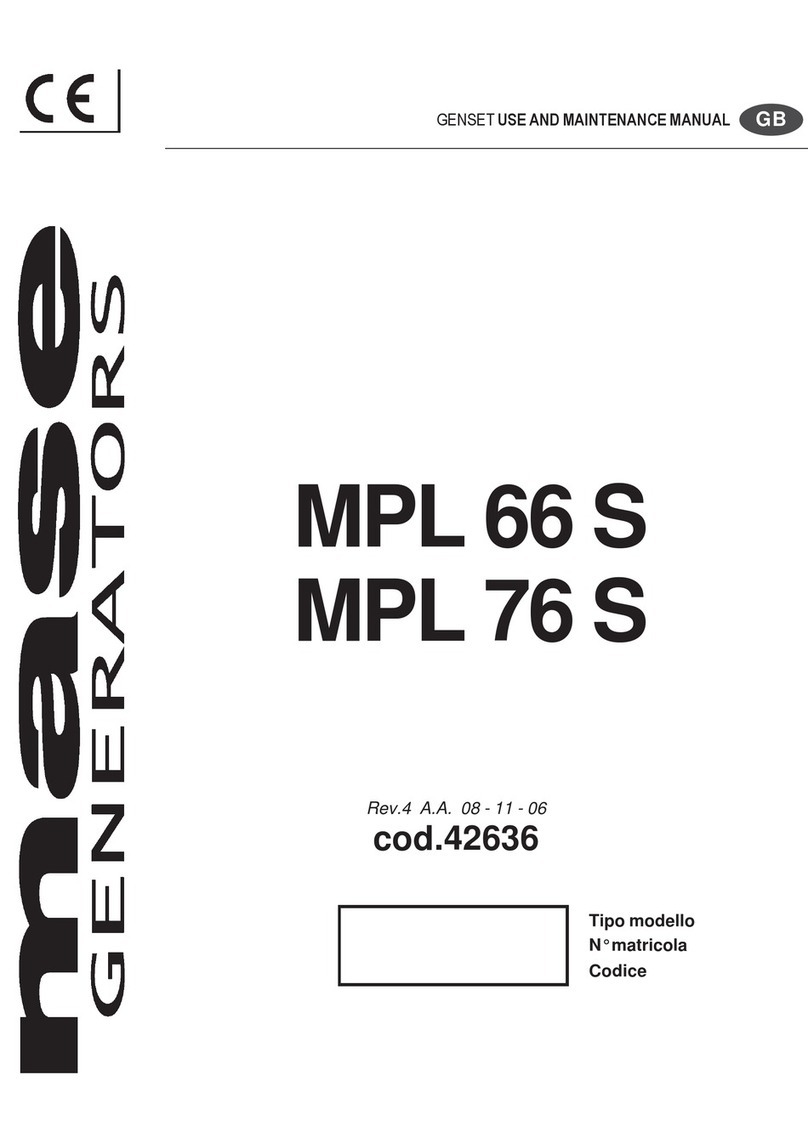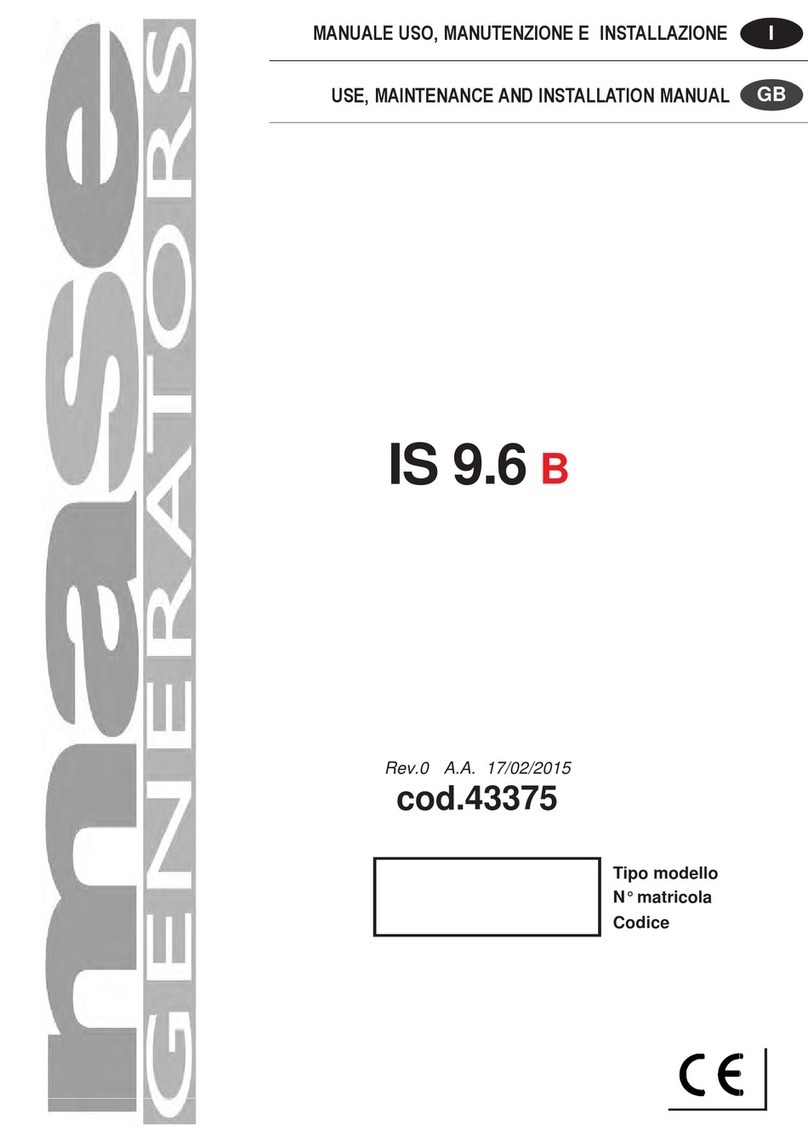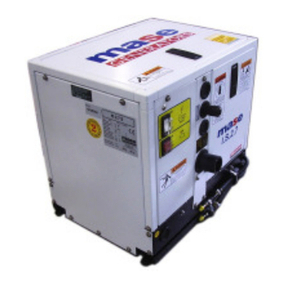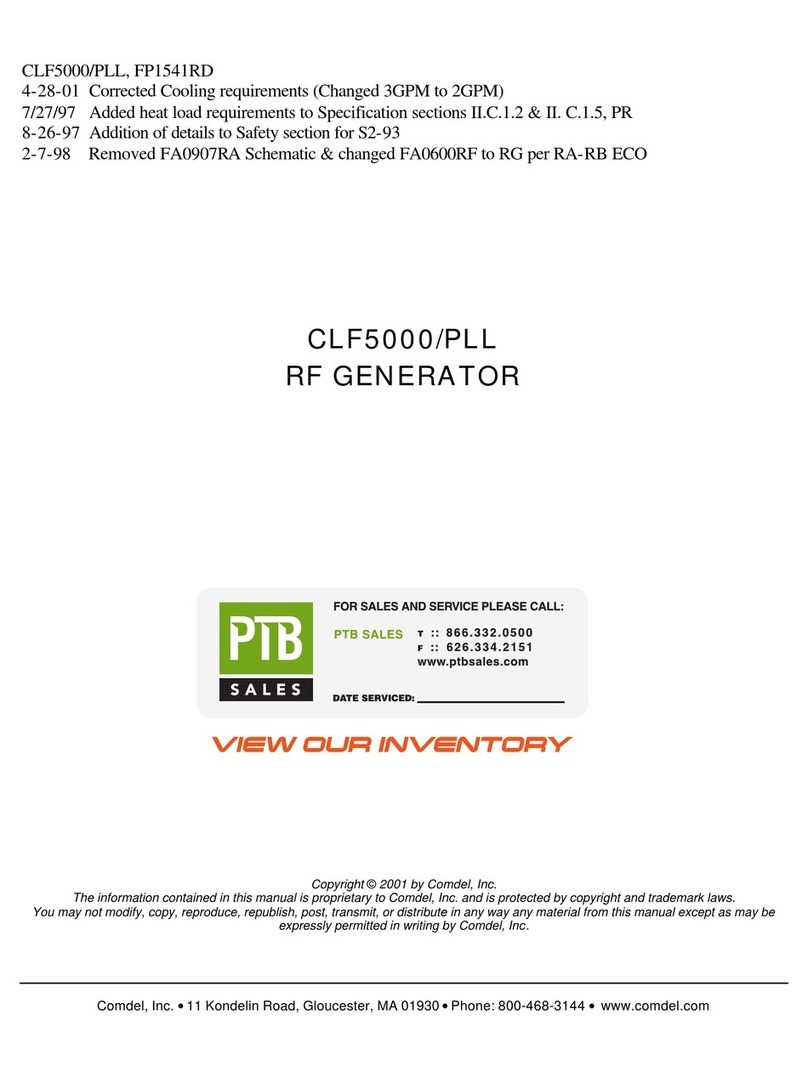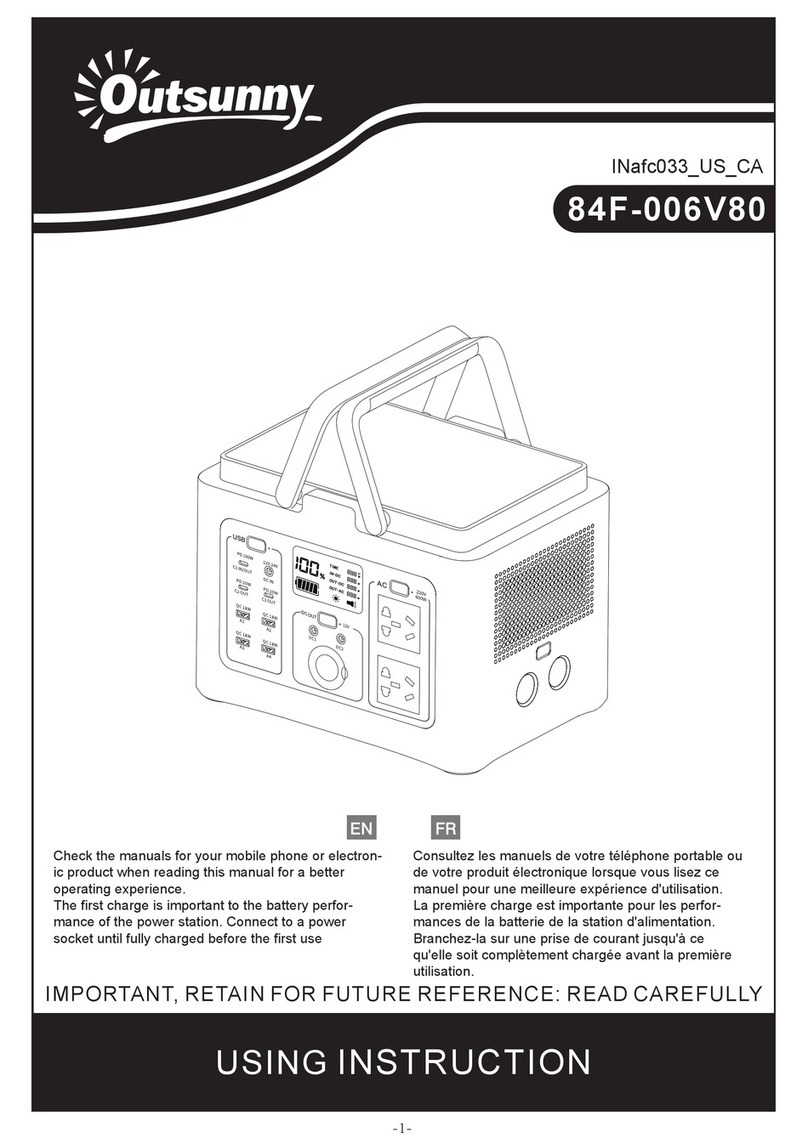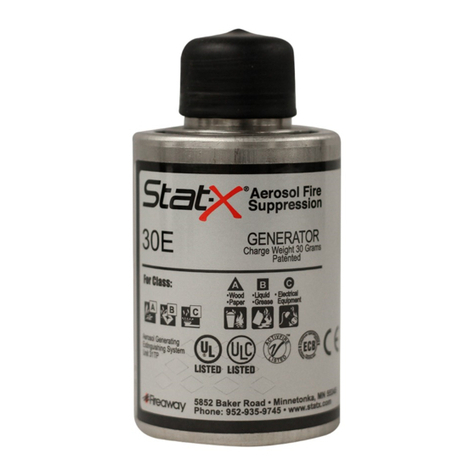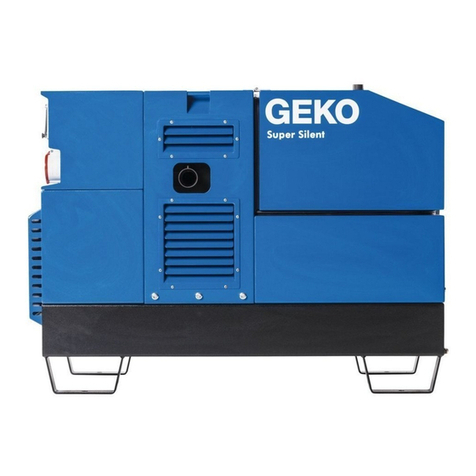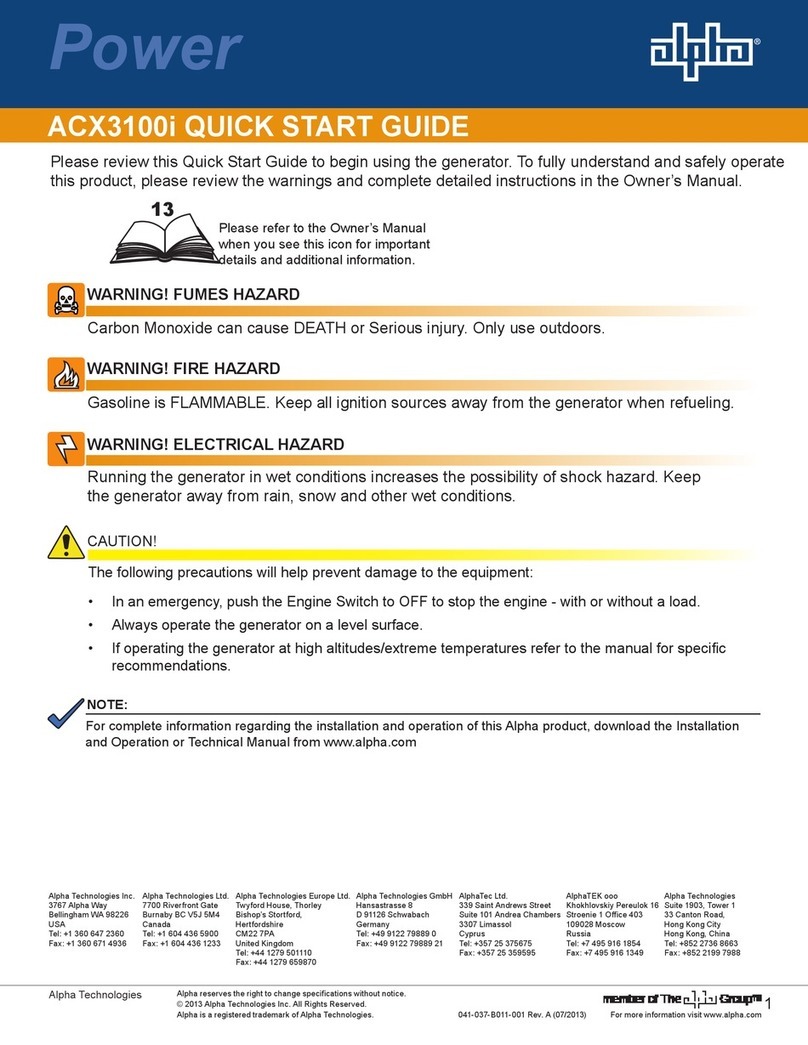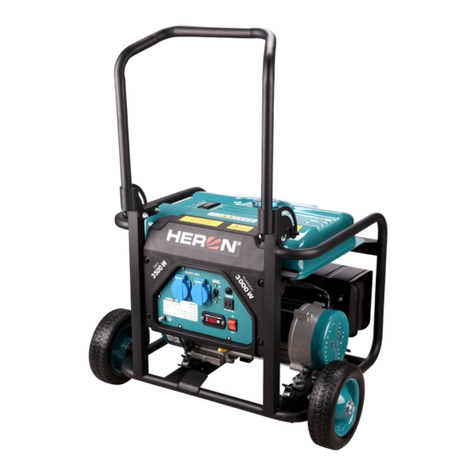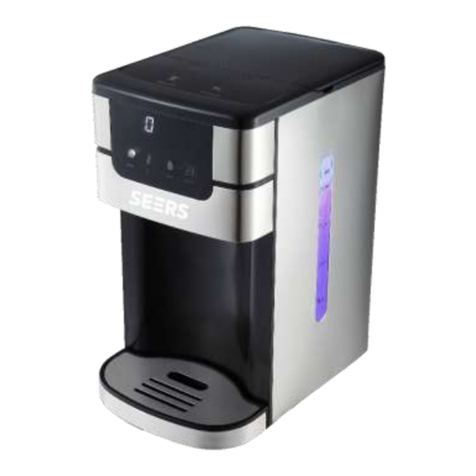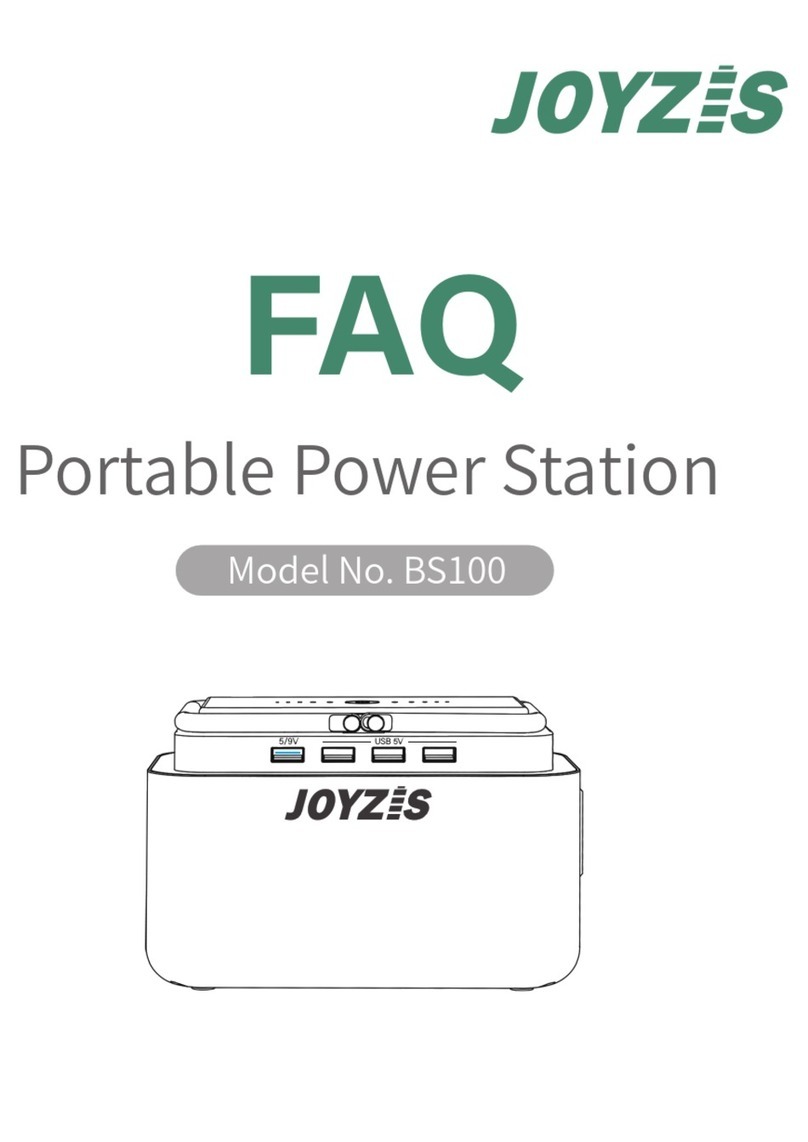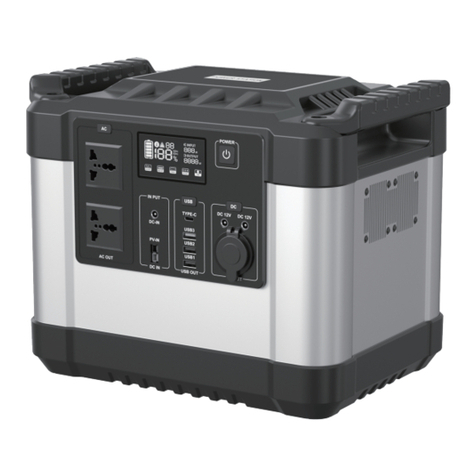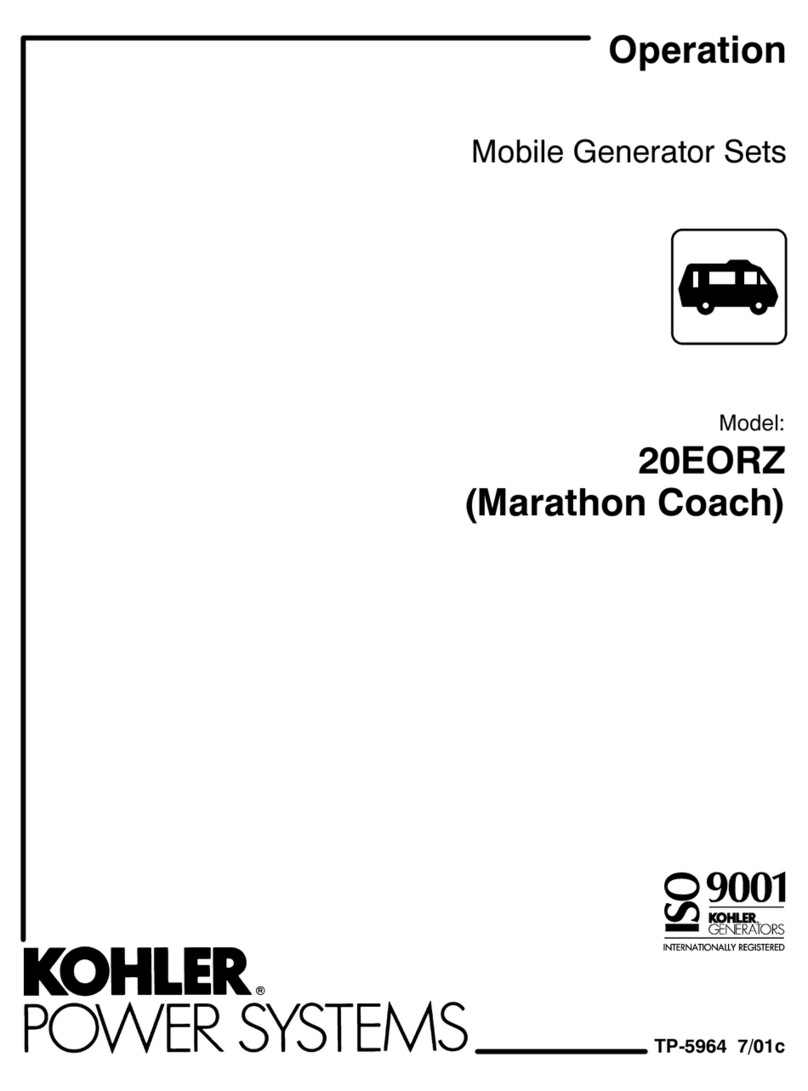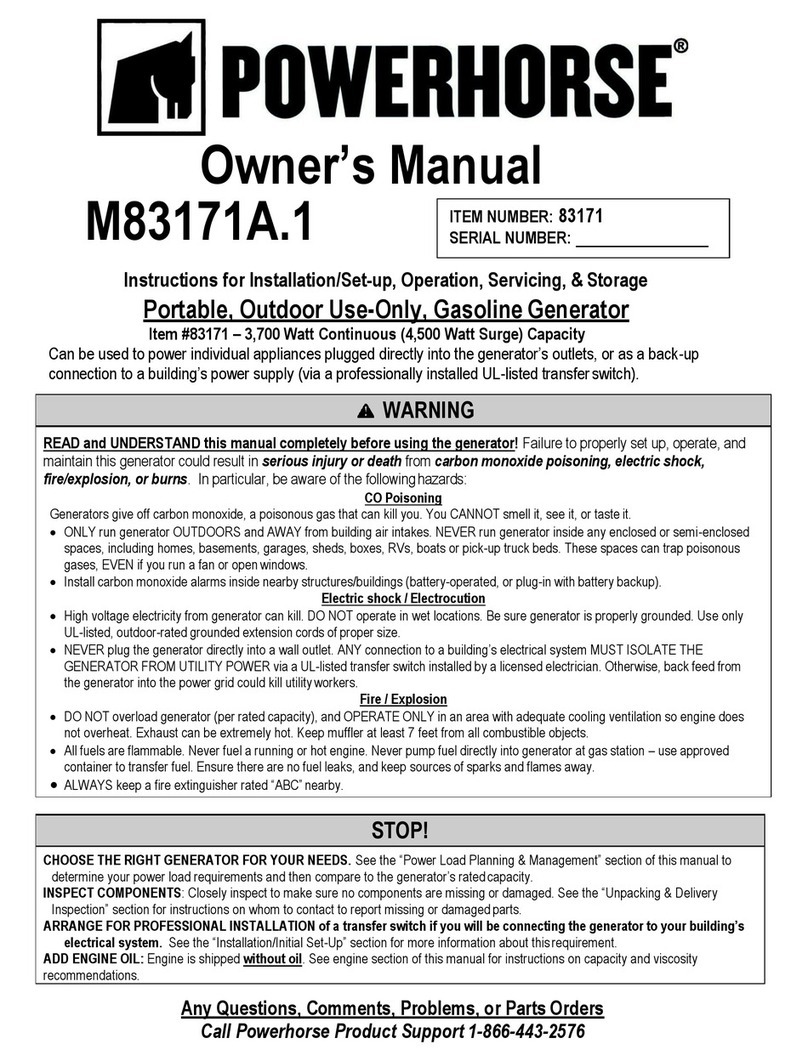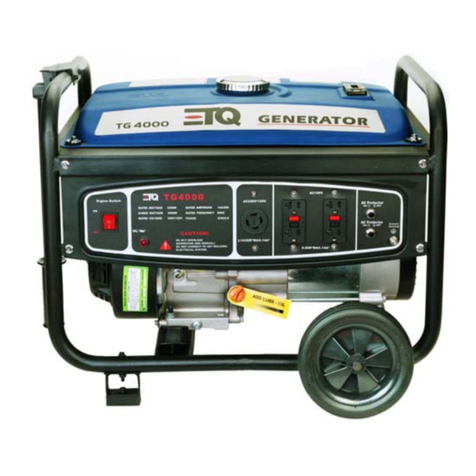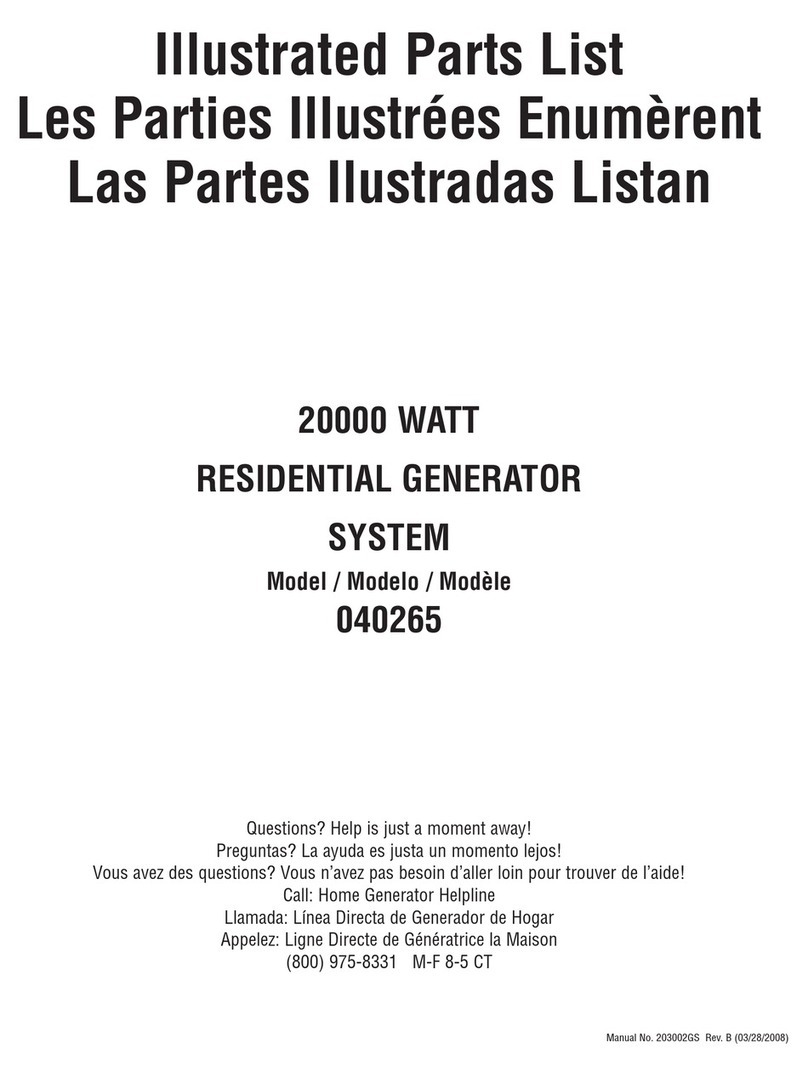IS 25T - IS30T - IS34T 50 Hz
- 10
GB
GB
INDEX
Pictures .................................................................. 2
Wiring diagram ...................................................... 8
1 GENERAL INF RMATI N ............................ 11
1.1 Purpose and field of application of the manual11
1.2 Symbols ....................................................... 11
1.3 Reference documents ................................... 12
1.5 Reference regulations and ............................ 12
legislative provisions ..................................... 12
1.6 Machine identification ................................... 12
1. Generetors conposition ................................. 13
1.8 Instrument panel ........................................... 13
2 GENERAL INF RMATI N ............................ 14
2.1 Reference documents ................................... 14
2.2 Reference regulations and legislative provisions
14
2.3 Marking ........................................................ 14
2.4 Identification of the generator unit ................. 14
3 GENERAT R CARACTERISTIC .................... 15
3.1 General caracteristic .................................... 15
3.2 Cooling system ............................................ 15
3.3 Control panel ................................................ 15
3.3.1 Data sheet IS 25 ......................................... 16
3.3.2 Data sheet IS 30 ......................................... 16
3.3.3 Data sheet IS 34 ......................................... 1
4 SAFETY REGULATI NS ............................... 17
4.1 General precautions ..................................... 1
4.2 Prescriptions for safety during installation ..... 18
and setup ..................................................... 18
5 USING THE GENERAT R ............................. 18
5.1 Preliminary checks ........................................ 18
5.2 Bleeding the fuel system .............................. 18
5.3 Starting ........................................................ 18
5.4 Stopping ....................................................... 18
6 PR TECTI NS ............................................. 19
6.1 Low oil pressure protection ........................... 19
6.2 High water temperature protection ................ 19
6.3 Alternator overheating protection ................... 19
6.4 Protection against short-circuit and overload . 19
6.5 Protection against short-circuit of the ........... 19
low-voltage electric system ........................... 19
7 MAINTENANCE ............................................. 19
.1 Preamble ...................................................... 19
.2 Ordinary engine maintenance ....................... 19
.3 Engine oil and oil filter change ...................... 20
.4 Air filter cleaning ........................................... 20
.5 Fuel filter replacement .................................. 20
.6 Coolant check .............................................. 20
. V-belt tension check ..................................... 20
.8 Emptying the cooling system ....................... 21
.9 Coolant replacement ..................................... 21
.10 Zinc anode replacement................................ 21
.11 Seawater pump maintenance........................ 21
.12 Alternator maintenance ................................. 21
.13 Battery maintenance .................................... 21
.14 Periods of inactivity....................................... 22
.15 Table of scheduled maintenance ................... 22
.16 Troubleshooting ............................................ 22
8 TRANSP RT AND HANDLING ..................... 23
9 SCRAPPING ................................................. 23
10 WIRING DIAGRAM REFERENCES ................ 23
